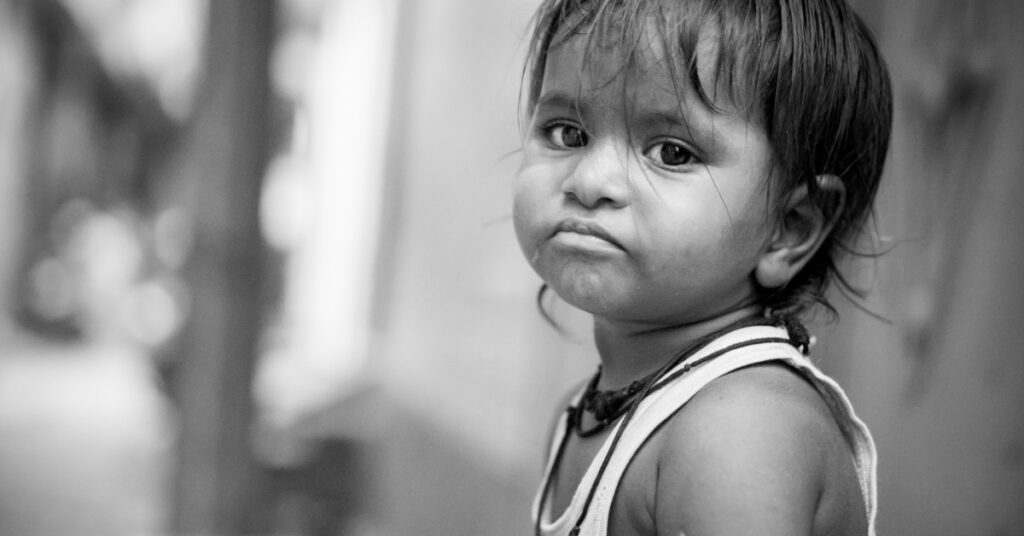Fear of heights, or acrophobia, can affect anyone, including children. It is important to identify this fear early.
Acrophobia in children can be both challenging and distressing for parents. This fear can limit a child’s experiences and impact their daily life. Understanding the early signs of acrophobia can help you support your child better. Recognizing the symptoms early allows for timely intervention, ensuring your child can enjoy activities without fear.
This blog post will explore the early signs of acrophobia in children and offer practical tips on how to help them. By the end, you’ll have a clearer understanding of how to guide your child through their fear, making their world a bit less scary.
Topic of Contents
ToggleEarly Signs Of Acrophobia
Children with acrophobia may show fear of heights, avoiding activities like climbing or looking out windows. Signs include dizziness, sweating, and panic. Early intervention and support can help reduce their anxiety.
Recognizing acrophobia in children early can help manage their fears. Parents should be aware of various symptoms that may indicate a fear of heights. These signs can be both physical and behavioral, making it essential to understand each type.
Physical Symptoms
Children may exhibit physical signs of acrophobia. These symptoms often appear when they are high up or even thinking about heights. Sweating is common. Their hearts might beat faster. Some children experience shaking or trembling. Feeling dizzy or lightheaded is another indicator. Nausea or stomach discomfort is also possible.
Behavioral Indicators
Behavioral changes can also signal acrophobia in children. They may avoid places that involve heights. For example, they might refuse to climb stairs or use elevators. Some children become anxious or cry when they are at a height. They might cling tightly to a caregiver or object. Reluctance to participate in activities involving heights is a red flag. Understanding these signs helps in addressing acrophobia effectively. Early intervention can make a significant difference. “`
Causes Of Acrophobia
Acrophobia, or the fear of heights, can affect children in various ways. Understanding the causes can help in early identification and management. This fear can arise from several factors, both genetic and environmental. Recognizing these causes is key to providing the right support for children.
Genetic Factors
Genetics may play a role in acrophobia. If a parent has a fear of heights, the child might inherit this tendency. Studies show that anxiety disorders can run in families. This genetic link makes children more susceptible to developing acrophobia.
Environmental Triggers
Environmental factors can also lead to acrophobia in children. A traumatic experience involving heights can trigger this fear. For example, a fall from a high place can instill a deep fear. Observing someone else’s fear of heights can also influence a child.
Children often learn by watching adults. If a parent shows fear of heights, the child might mimic this behavior. Continuous exposure to such scenarios can cement this fear in their minds.
Risk Factors
Understanding the risk factors for acrophobia in children can help parents and caregivers recognize early signs. Identifying these factors early can lead to timely intervention and support for the child.
Age-related Vulnerabilities
Children between ages 7 and 9 are most vulnerable. At this age, they begin to grasp the concept of height and danger. Their imaginations can amplify fears, making them more susceptible to acrophobia.
Younger children might not express their fears verbally. They may show it through avoidance or anxiety in high places. Watch for these signs to address the fear early.
Family History
A family history of anxiety disorders can increase the risk. If parents or close relatives have acrophobia, children may be more likely to develop it too.
Genetics play a role in how children process fear. They may inherit a tendency to be more anxious. Being aware of family history helps in understanding and managing the child’s fear.
Impact On Daily Life
Acrophobia, or the fear of heights, can greatly affect a child’s daily life. This fear can influence many areas, including school performance and social interactions. Understanding these impacts can help parents and caregivers provide the necessary support.
School Performance
Children with acrophobia may struggle with school activities. They might avoid certain classes or events that involve heights, like gym sessions or field trips. This avoidance can lead to missed learning opportunities.
Fear of heights can also cause anxiety, which impacts concentration. Children might find it hard to focus on their studies. This distraction can result in lower grades and reduced academic performance.
Teachers may notice signs such as reluctance to participate or unexplained absences. It’s important for educators to understand these signs and provide a supportive environment.
Social Interactions
Social interactions can also be affected by acrophobia. Children might avoid social events held in high places. This avoidance can lead to isolation from peers.
They may feel embarrassed about their fear, leading to low self-esteem. This can affect their confidence in social settings. They might miss out on fun activities, which can limit their social development.
To help, parents and caregivers can encourage gradual exposure to heights. Slowly increasing exposure can help children manage their fear. Support from friends and family is also crucial.
By understanding the impacts of acrophobia on daily life, parents and caregivers can take steps to help their children cope with and overcome their fears.
Diagnosis
Understanding the diagnosis of acrophobia in children is crucial. Early detection helps in providing timely support. Identifying the disorder involves observing specific signs and seeking professional assessment.
When To Seek Professional Help
Parents should consider seeking professional help if their child:
- Shows extreme fear of heights.
- Avoids activities involving heights.
- Experiences physical symptoms like dizziness or sweating.
- Has trouble sleeping due to fear of heights.
- Shows signs of anxiety in high places.
These signs indicate the need for a detailed evaluation by a mental health professional.
Diagnostic Tools
Professionals use various diagnostic tools to assess acrophobia:
- Clinical Interviews: Detailed conversations to understand the child’s fear.
- Questionnaires: Structured forms to gauge the intensity of the phobia.
- Behavioral Observations: Monitoring the child’s reactions in controlled settings.
- Psychological Tests: Standardized tests to evaluate anxiety levels.
These tools help in forming an accurate diagnosis and developing an effective treatment plan.
Therapeutic Approaches
Children with acrophobia may experience intense fear when exposed to heights. Identifying early signs is crucial for effective treatment. One key strategy involves various therapeutic approaches. These therapies aim to reduce fear and improve coping mechanisms. Let’s explore some effective methods.
Cognitive Behavioral Therapy
Cognitive Behavioral Therapy (CBT) helps children recognize and change negative thought patterns. It teaches them to replace irrational fears with rational thoughts. This process can empower children to face their fears.
CBT involves:
- Identifying negative thoughts
- Challenging these thoughts
- Replacing them with positive ones
With practice, children can learn to manage their fear of heights more effectively.
Exposure Therapy
Exposure Therapy gradually exposes children to heights in a controlled manner. This method helps reduce anxiety over time. It allows children to experience heights without fear.
Steps in Exposure Therapy:
- Create a hierarchy of fear-inducing situations
- Start with the least frightening scenario
- Gradually move to more challenging situations
By facing their fears step-by-step, children can build confidence and reduce their acrophobia.
Support At Home
Supporting a child with acrophobia at home is essential. Creating a safe and nurturing environment can ease their fears. Parents play a key role in helping their children overcome this phobia. Below are some practical ways to offer support at home.
Creating A Safe Environment
Ensure your home feels safe for your child. Remove or limit access to high places. This can include:
- Securing windows and balconies
- Installing safety gates
- Using locks on doors leading to rooftops
Provide comfortable spaces for your child to retreat. A cozy corner or a special room can help them feel secure.
Positive Reinforcement
Encourage your child with positive words. Praise them for small successes. This can boost their confidence.
Use a reward system to reinforce positive behavior. For example:
| Action | Reward |
|---|---|
| Looking out the window | Extra playtime |
| Climbing a small ladder | Favorite snack |
Consistency is key. Regular praise and rewards can make a significant difference.
Preventive Measures
Preventing acrophobia in children requires early and consistent actions. By recognizing early signs and taking the right steps, parents can help children overcome their fear of heights. This section covers key preventive measures to build confidence and encourage gradual exposure.
Building Confidence
Confidence plays a significant role in managing acrophobia. To build confidence, start with simple tasks. Encourage your child to climb small steps or ladders. Praise every effort, no matter how small. Positive reinforcement helps them feel safe and capable.
Engage your child in activities that promote balance and coordination. Sports like gymnastics or rock climbing can be beneficial. These activities improve physical skills and boost self-esteem. The key is to create a supportive environment.
Encouraging Gradual Exposure
Gradual exposure to heights helps children face their fears step by step. Start with low heights that feel comfortable. As they grow more confident, slowly increase the height. This process should be slow and steady.
Use everyday situations to expose them to heights. For example, looking out from a low balcony or standing on a small hill. Celebrate their achievements and reassure them along the way.
Remember, patience is crucial. Each child progresses at their own pace. Providing gentle encouragement and celebrating small victories can make a big difference.
Frequently Asked Questions
What Is Acrophobia In Children?
Acrophobia in children is an intense fear of heights. It can cause anxiety or panic attacks in high places.
What Are Early Signs Of Acrophobia?
Early signs include dizziness, sweating, and trembling. Children may also avoid high places and show visible fear.
How Can Parents Help With Acrophobia?
Parents can help by offering support and understanding. Gradual exposure to heights and professional therapy may also be beneficial.
Can Acrophobia Affect Daily Life?
Yes, acrophobia can affect daily life. It can limit activities and cause stress in high places like stairs or playgrounds.
Conclusion
Recognizing acrophobia early can help children manage their fears. Pay attention to their reactions to heights and seek professional guidance if needed. Support and patience are essential. Simple coping strategies can make a big difference. Encourage gradual exposure to heights in a safe way.
Celebrate small victories. With time and care, children can overcome their fear of heights. Remember, every step forward counts. Stay positive and supportive throughout the journey. Your involvement plays a crucial role in their progress.







